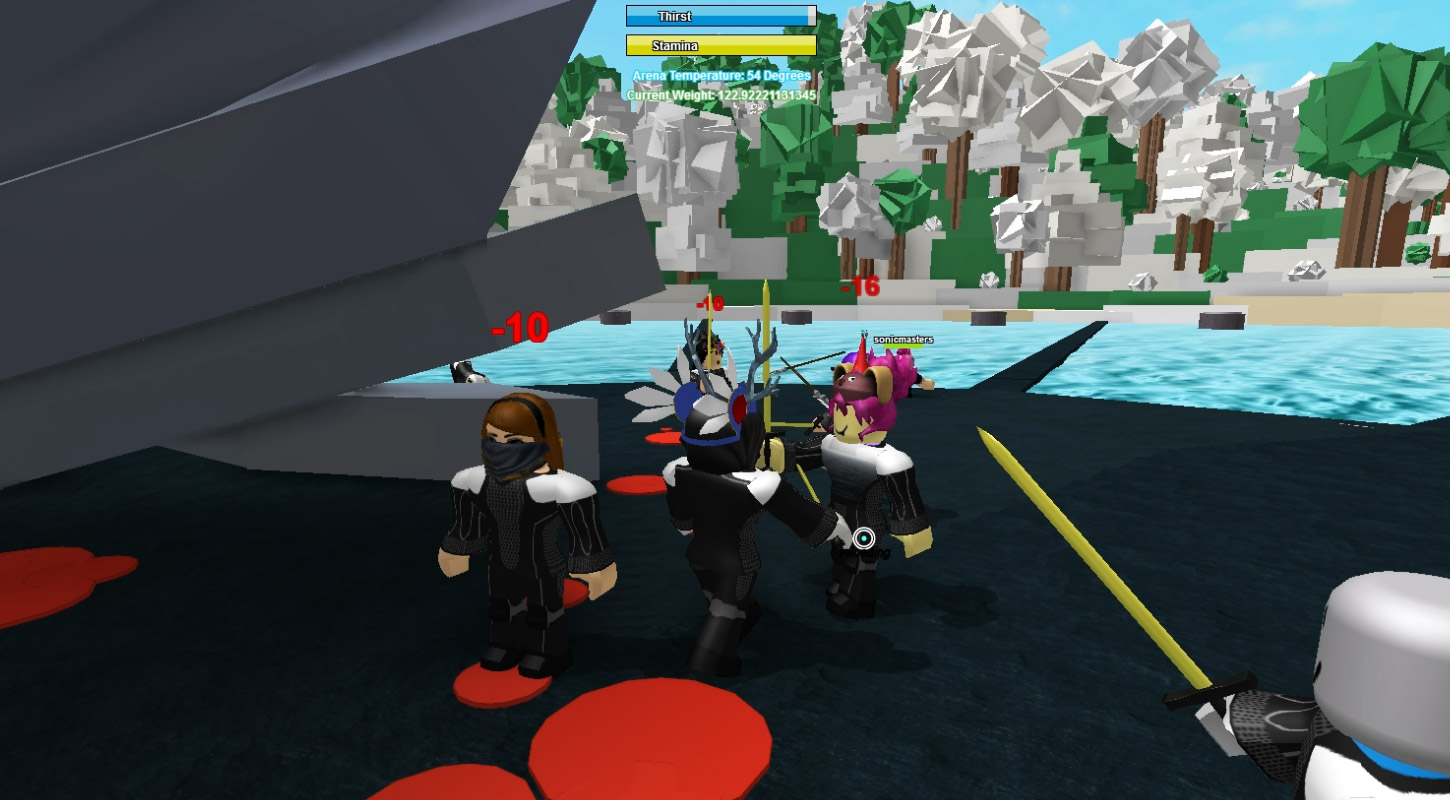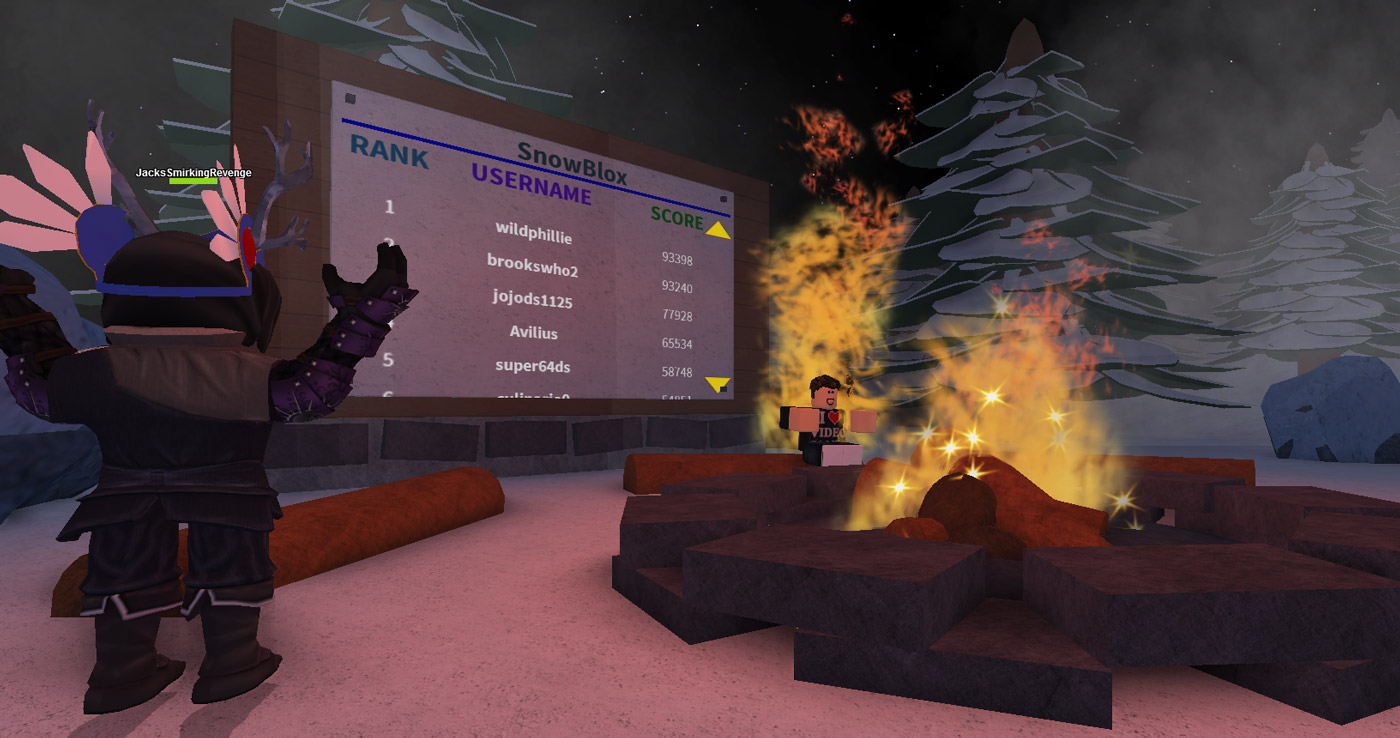Blog Archive

Catching Fire by SmoothBlockModel. Fueled by ROBLOX.
With an integrated development environment, multi-platform support, and a global cloud of multiplayer game servers that auto-scales to hundreds of thousands of concurrent players, ROBLOX is already one of the easiest and most opportunity-rich platforms on which to make games. But we’re not stopping there. The ROBLOX game developer is about to be able to create even deeper, more immersive experiences with the rollout of technology that redefines the ROBLOX game – that gives developers the fuel they need to create exactly the engrossing games they envision.
The first example of this technology was showcased in the ROBLOX Winter Games, a 10-day gaming competition that ended earlier this week. While the Games comprised five very different events – from snowboarding to tank battling – created by teenage members of our development community, all of the pieces were wrapped together in a single universe. Players entered the Winter Games world via a ski lodge – handcrafted by asimo3089 – and used the ski lift out back to teleport to the event of their choice. There was no break in the immersion of the Winter Games. No matter where you were in the universe at any given moment, you always had a connection back to the ski lodge.
That connection was fused using two methods. First, players could, at any moment, teleport from an event back to the ski lodge. Second, players’ performances in each of the events were tracked and saved in a centralized global database using our new framework for persistent data. This saving of data was always happening in the background, and it allowed a global leaderboard of the top competitors to be displayed in-game at the ski lodge using Surface GUIs. This represented a huge leap forward in the developer’s ability to reliably save data about their game and the players in it.
If this structure sounds familiar, that’s because it is. A common parallel would be an MMO – something like World of Warcraft – where players spawn in a safe zone with shops and common social areas, and then teleport into the action when they’re ready.
Epic moments, intense competition and unexpected results unfolded in the fun of the Winter Games; yet, they represented but a fraction of what’s possible. All of the features that were used to fuel the Winter Games will soon be publicly available, and we are anxiously anticipating what the most ambitious game developers will do to take this functionality further than we’ve even imagined.
Create your own MMO? Totally possible. Allow players to add user-generated content to it? That too. Endless variety? When your game is fueled by ROBLOX, you can make it happen. Welcome to the future of game development: we give you a high-tech and robust infrastructure; you focus on making an amazing game.
So far, two features integral to the Winter Games have released to all ROBLOX developers.
Improved teleports
Teleports have existed on ROBLOX for a while and serve to let players jump from place to place without having to exit the application. We’ve upgraded the teleport feature so that the transfers from one place to another are much faster. The biggest change to the new teleports is that they are not powered by LocalScripts (which are challenging to build because they must coordinate with the server), but by code that is run straight from the game server. This enables developers to create massive games out of a series of interconnected places, and let players jump between them quickly.
We’ve released a new API for teleports, opening the doors to more possibilities. For more information on the TeleportService, see this ROBLOX Wiki entry.
New data persistence
Data persistence allows developers to save information about their game and the players in it. This, too, has existed for some time, but we’ve just released substantial upgrades:
- Reliable global data saving across servers
- Data covers not just players, but any game information (e.g., time of day, high scores, the state of resources in a place, etc.)
- Data persistence API
Why is this important? Data is what lets players teleport between a game’s interconnected places (e.g., towns, levels, etc.) in a meaningful way. When players move between the sectors of a RPG, for example, they carry their character data with them. When players build their own content in someone else’s game, they can come back to it just as they left it during a later session.
Our developers paid meticulous attention to the new DataStore API so it’s easy for game creators to realize the power of data persistence. The top ROBLOX games have thousands of people playing them concurrently at peak times. This creates a lot of overlapping data saving. We specifically elevated the DataStore API for developers facing this situation – for example, the Update function handles concurrent data updates automatically. We built in the logic so developers don’t have to worry about it and can focus on making a great game with a seamless player experience.
For more technical information on developing using the DataStore, see this ROBLOX Wiki entry.
The next piece of the puzzle is the ability to have multiple places contained within one game. This feature was recently made available to a select group of top developers and we anticipate it will be available for everyone by the end of this month.
This is the first article in a series about ROBLOX’s expanding technology infrastructure and the compelling, large-scale games it enables developers to create. Next time, we’ll look closer at the types of games that are made possible with ROBLOX as your fuel.


